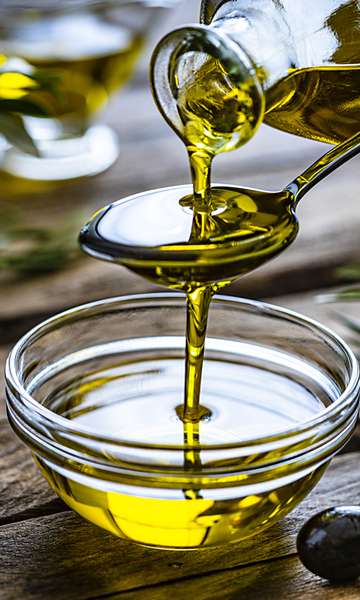Find out if there is a meaning behind each of them and how to choose the type of olive oil that is best for you
When we come across shelves full of bottles of olive oil at the supermarket, one of the first things we notice is the color of the cap. Have you ever wondered what this color represents? Does it have any influence on the quality or use of olive oil? Let’s explore this topic and unravel the mystery of olive oil cap colors.
The different colors and their meanings
In general, the colors of olive oil caps can be associated with different uses and characteristics of the product. For example, the red cap is often related to use at high temperatures, such as fried foods. This can be useful for those looking for a heat-resistant oil to prepare their fried foods.
On the other hand, the colors green, yellow and white they usually represent more delicate olive oils, ideal for dressing salads and flavoring fresh foods. These olive oils are generally considered to be of high quality and are recommended by nutritionists for daily use.
There is no official standard
However, it is important to underline that the colors of the lids may vary depending on the manufacturer and there is no universal standard. What red means for one brand may not mean the same thing for another. This diversity of interpretations can create confusion for consumers, who may expect a certain type of oil based on the color of the cap and end up seeing different results.
According to olive oil expert Ana Beloto, an expert in the world of olive oil, lid colors are often used as a guide, but they shouldn’t be the only criteria for choosing an olive oil. It is important to read labels, understand classifications and manufacturing processes to make an informed decision.

Where to buy and how much the best olive oil in Brazil costs
Understand the types of olive oil
Now that we have understood the issue of lid color, it is essential to know the different types of olive oil available on the market and their characteristics:
Extra virgin olive oil: This is the highest quality olive oil, with low acidity (about 1%) and the healthiest of all. It is ideal for dressing salads and everyday dishes and is highly recommended by nutritionists.
Virgin olive oil: It has a slightly higher acidity, around 2%, which makes it slightly less healthy than extra virgin olive oil. However, it is still a great choice for everyday food preparation.
Refined olive oil: With more than 2% acidity, this type of olive oil is the least suitable for daily consumption. It is best used for frying, as it is healthier than regular cooking oil, but it should be consumed in moderation.
Compound olive oil: Contains other vegetable oils in its composition, such as soybean, sunflower and corn. Therefore, it does not offer the same health benefits as pure olive oil and is not recommended for frequent consumption.
Choose the ideal olive oil
According to Ana Beloto, a renowned olive oil expert, we should consume about 20 ml of olive oil per day, the equivalent of two tablespoons. By dividing this quantity between meals, the flavor of olive oil integrates harmoniously into dishes.
Virgin and extra virgin olive oils are the most suitable for daily use, as they retain their benefits even when heated. Therefore, they are versatile enough to be used in both salads and stir-fries.
On the other hand, lower quality refined and compound olive oils may be reserved for frying and sautéing, as the frying process itself is no longer the healthiest option.
Remember that, regardless of the color of the cap, it is essential to read the labels and understand the characteristics of each oil to choose the one best suited to your culinary and health needs. With the right information you will be able to enjoy the taste and benefits of olive oil to the fullest.
Source: Terra
Ben Stock is a lifestyle journalist and author at Gossipify. He writes about topics such as health, wellness, travel, food and home decor. He provides practical advice and inspiration to improve well-being, keeps readers up to date with latest lifestyle news and trends, known for his engaging writing style, in-depth analysis and unique perspectives.






-qy258ecdoj1f.png)

